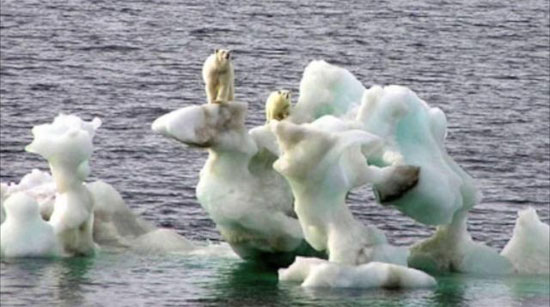The volume of ice in the Arctic drops to a record low
According to data from the European Space Agency (ESA) on September 11, the Arctic sea ice is continuing to decline sharply in volume, besides narrowing the area to an unprecedented level in the summer.
The findings are based on the findings from ESA's scientific satellite CryoSat.
ESA said in April last year, the Arctic ice sheet was the thinnest ever observed within three years of survey.

Photo: vimeo.com
Professor Andrew Shepherd of the University of Leeds (UK) said that the data provided by the CryoStat is clear evidence of the narrowing of Arctic sea ice.
From the satellite measurement results it is possible to see the ice in some areas of the Arctic thinner than other regions, in addition to winter and summer ice cuts in the last three years. The volume of Arctic sea ice at the end of the winter is only less than 15,000 km 3 , the lowest level of all years before the summer.
Previously, in the summer of 2012, the Arctic sea ice volume also dropped to a record low, a sign that many experts consider as a result of human warming.
CryoSat satellite - in fact CryoSat-2, replaces the original satellite lost when launched, was put into orbit in April 2010. It has an all-time microwave radar altimeter, capable of detecting changes in ice thickness to an accuracy of 1cm.
ESA said the satellite is designed with a three-year operating time but is still in good condition and can continue to be used until 2017.
- The Arctic ice sheet dropped a record
- Arctic ice is melting record fast
- Arctic sea ice area is at a record low
- Ice in the Arctic down to a record low
- The ozone layer in the Arctic declined to record
- Eye drops can prevent myopia in children
- The area of ice in the Arctic dropped a record in the summer
- 2040 will no longer have ice in the Arctic?
- Interesting facts about animals living in the Arctic
- Discover the ancient village of Eskimo under the ice melting in the Arctic
- Every second 14,000 tons of water flows into the sea because the Arctic ice melts
- Record of ... dogs
 Is the magnetic North Pole shift dangerous to humanity?
Is the magnetic North Pole shift dangerous to humanity? Washington legalizes the recycling of human bodies into fertilizer
Washington legalizes the recycling of human bodies into fertilizer Lightning stone - the mysterious guest
Lightning stone - the mysterious guest Stunned by the mysterious sunset, strange appearance
Stunned by the mysterious sunset, strange appearance